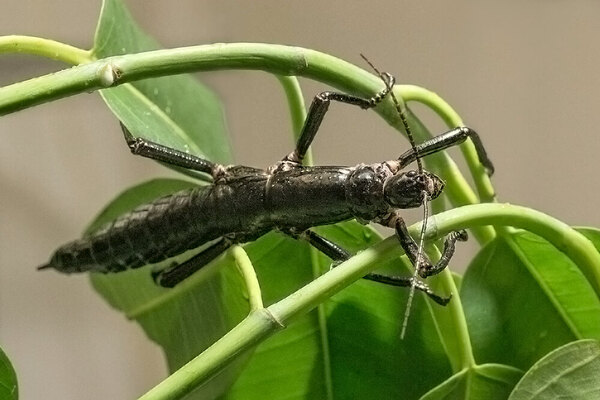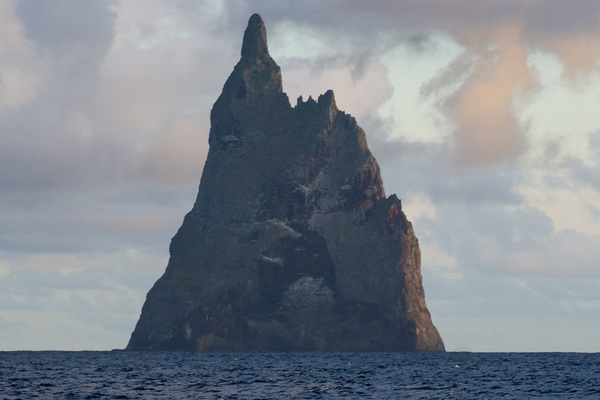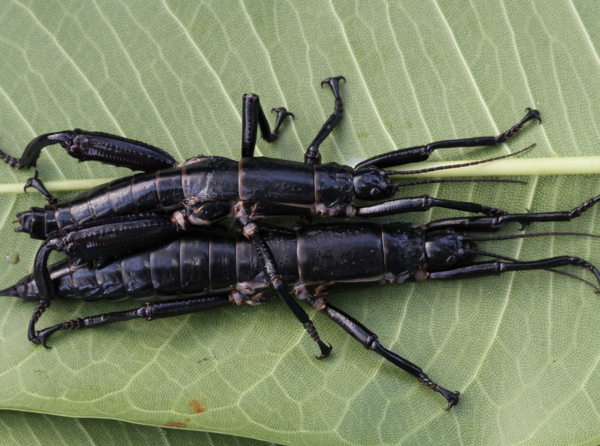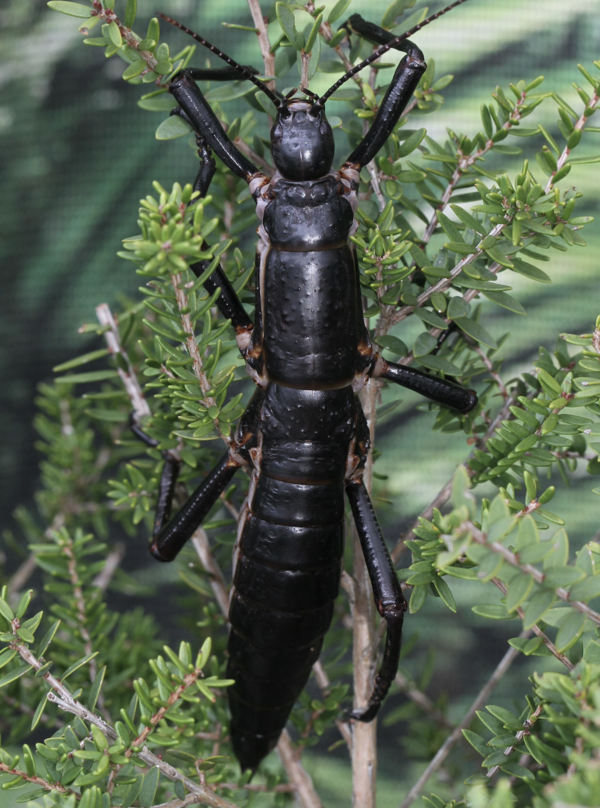The story of the "tree lobster," also known as the Lord Howe Island stick insect (Dryococelus australis), is a remarkable example of survival against overwhelming odds. Once thought to be extinct, this resilient insect’s escape from oblivion is a testament to nature’s tenacity and human dedication to conservation. Here’s a detailed look at how the tree lobster narrowly escaped extinction and found a path to recovery.

The Lord Howe Island stick insect was once abundant on Lord Howe Island, a remote island off the coast of Australia. But in 1918, a shipwreck brought black rats to the island. The rats, having few natural predators, multiplied rapidly and quickly devastated native wildlife. With its large, soft body and lack of defenses, the tree lobster was an easy target. Within a few years, sightings of this insect vanished, and by 1920, it was declared extinct.

In 1964, climbers on Ball’s Pyramid, a towering, rocky spire around 23 kilometers from Lord Howe Island, reported seeing large insect droppings. However, it wasn’t until 2001 that scientists investigated further and found what seemed impossible: a tiny population of live Lord Howe Island stick insects. Only about 24 individuals were clinging to life among a small patch of vegetation, surviving in the cracks of the rock. This discovery was astonishing; the last known sighting had been over 80 years ago.
Several factors contributed to the tree lobster’s escape from extinction:
Isolation on Ball’s Pyramid: Ball’s Pyramid is a virtually inaccessible volcanic rock formation, which may have kept the black rats away and allowed a few stick insects to survive undisturbed.
Adaptive Resilience: The insects adapted to the sparse vegetation and harsh conditions of Ball’s Pyramid, showing an impressive resilience to survive with limited food and shelter.
Limited Predators: Unlike Lord Howe Island, where rats were rampant, Ball’s Pyramid’s isolated location and rugged terrain limited predators, allowing the insects to survive in relative peace.
Upon rediscovery, a small number of tree lobsters were carefully brought back to Australia’s Melbourne Zoo, where a controlled breeding program was launched. At first, this program faced challenges, as the insects were sensitive to environmental conditions and stress. However, the zoo team, with help from dedicated entomologists, gradually perfected their methods, and the population began to grow.
Today, the breeding program has produced hundreds of tree lobsters, and researchers are studying ways to reintroduce the insect to Lord Howe Island. Rat eradication efforts on the island are ongoing, and conservationists hope that one day the insects will return to their native home without the threat of invasive predators.
The survival of the Lord Howe Island stick insect shows that even species thought to be lost can sometimes find refuge in unexpected places. This story highlights the importance of:
Protecting Isolated Ecosystems: Isolated habitats can sometimes provide sanctuaries for species pushed out of their original habitats.
Targeted Conservation: Once identified, even small populations can be stabilized and expanded with proper care.
Community and Scientific Collaboration: The tree lobster’s survival depended on cooperation between scientists, local authorities, and the community to preserve, protect, and restore its habitat.

The tree lobster, or Lord Howe Island stick insect (Dryococelus australis), is not a food item, despite what its crustacean-inspired nickname might imply. This unique insect’s name is a humorous nod to its large size and “lobster-like” appearance rather than any culinary tradition. Here’s a detailed look at why the tree lobster is not suitable or intended for consumption and why it’s best left alone as a marvel of nature rather than a meal.
The tree lobster is an extremely rare species of large, flightless stick insect native to Lord Howe Island off the coast of Australia. The species earned its unusual nickname because of its size—up to 6 inches in length, with tough, lobster-like legs. Despite the name, the tree lobster is an insect with no culinary value or history as a food source.
One of the primary reasons the tree lobster isn’t considered a food source is its conservation status. This insect was believed to be extinct after invasive rats arrived on Lord Howe Island in the early 20th century, decimating the local insect populations. After being rediscovered in a small population on Ball’s Pyramid, conservationists have worked hard to increase their numbers through breeding programs. Eating or harvesting this insect would directly undermine these efforts, as the species is still critically endangered and carefully protected.
The tree lobster is not only protected, but it also has several practical attributes that make it an unsuitable food source:
Unappealing Taste and Texture: Unlike actual lobsters, this insect has a tough exoskeleton and lacks any significant, palatable meat. There are no accounts of it being consumed or enjoyed as food.
Nutritional Value: Tree lobsters lack the high protein and nutrient profile typically associated with edible insects. They’re also much rarer and harder to access than more common, edible insects like crickets or mealworms.
Protected Habitat: Tree lobsters are found in remote, restricted areas. They currently live mainly in conservation enclosures or carefully managed ecosystems, which aren’t accessible or suited to food collection.
As a species, the tree lobster plays a significant role in the ecosystem of Lord Howe Island, helping to maintain the island’s natural balance. Consuming or harvesting tree lobsters could disrupt this balance, especially if the species were to be introduced back to Lord Howe Island. Conservationists aim to restore their role in the ecosystem, not to exploit them for human consumption.
The tree lobster is also an inspiring example of conservation success. Its near-miraculous rediscovery and gradual recovery in captivity have made it a symbol of resilience. Instead of viewing it as a potential food source, the world views it as a reminder of the importance of preserving biodiversity.
In summary, the tree lobster is not edible or intended for human consumption. Its rarity, ecological importance, and role as an endangered species under protection mean that it should be left in peace. Today, the tree lobster stands not as a delicacy but as a symbol of nature’s resilience and a powerful story of conservation.

The tree lobster’s journey from extinction to revival underscores both the resilience of nature and the critical importance of dedicated conservation. As efforts continue, this once-lost insect offers hope that, with the right support, even the most endangered species can make a comeback. The story of the tree lobster serves as a powerful reminder that proactive conservation, habitat protection, and respect for isolated ecosystems can pave the way for endangered species to escape extinction.
animal tags: tree-lobster Dryococelus-australis
We created this article in conjunction with AI technology, then made sure it was fact-checked and edited by a Animals Top editor.